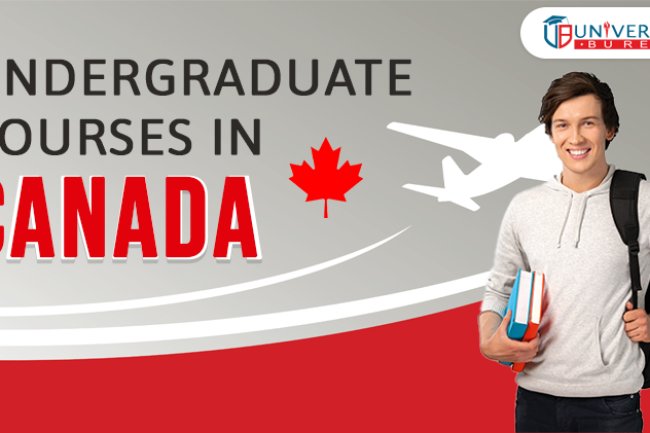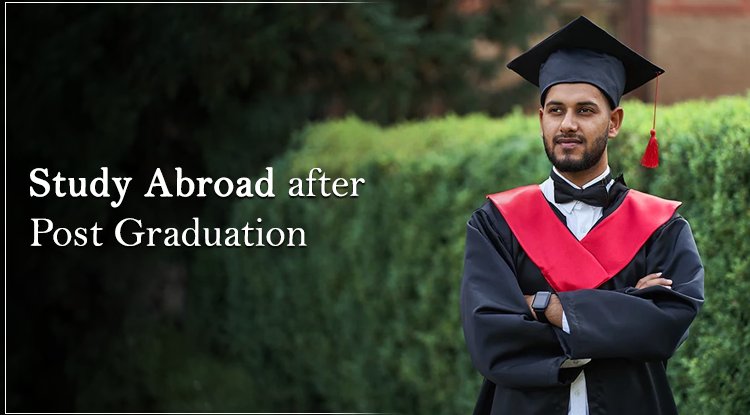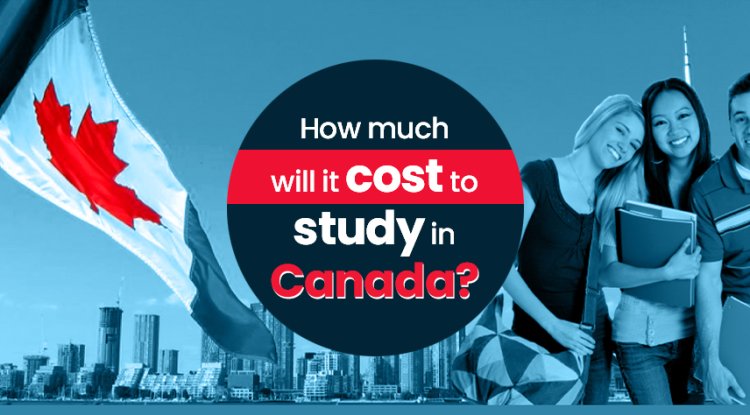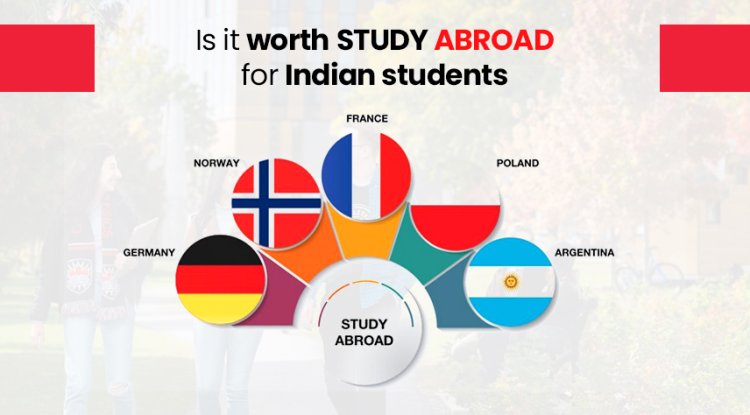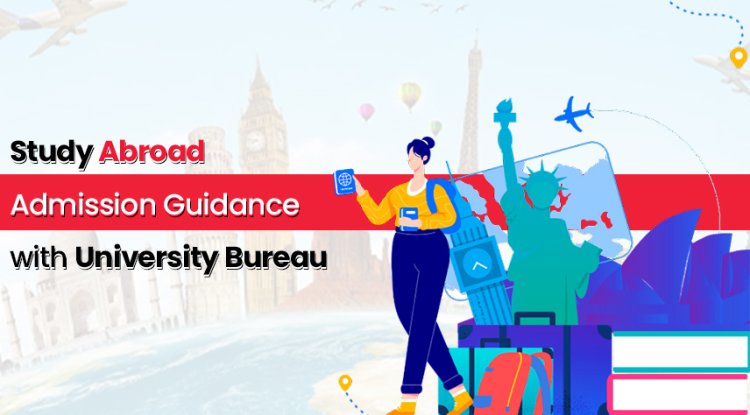Canada Visa Types
Canada offers various types of visas and permits to individuals who wish to visit, work, study, or live in the country. Here are some of the most common types of visas and permits for Canada
Both international students and immigrants look to Canada as a beacon of hope. Inviting 401,000 immigrants in 2021, 411,000 in 2022, and 421,000 in 2023 is part of the comprehensive 2021–2023 Immigration Levels Plan. Opportunities include dependent paths, higher education, and temporary work. Discover the many types of visas available in Canada, how to apply, and what to expect from the forthcoming intakes in 2021–2022. Your trip to Canada begins right here!
New IELTS Requirements For Canada SDS
With the new IELTS standards for the Student Direct Stream (SDS) program, Canada's immigration environment is changing in a fundamental way that will influence the academic aspirations of overseas students. These amendments, announced by Immigration, Refugees and Citizenship Canada (IRCC) and set to go into effect on August 10, 2023, are intended to offer a more open and promising pathway for students wishing to pursue their education in Canada.
A Shift in Perspective: New IELTS Requirements
The adjustment of the IELTS requirements for the SDS program, which reflects a progressive approach to global education, lies at the heart of these revisions. According to the revised structure, prospective students who wish to take advantage of the simplified SDS program must get an overall IELTS band score of 6.0. This all-encompassing approach is in line with the program's emphasis on total language proficiency, ensuring that students are not only proficient in individual language components but also able to communicate effectively across a range of contexts.
Holistic Proficiency Assessment: Eliminating Individual Score Criteria
The removal of the individual band score of 6.0 for each language component is one of the revisions to the standards that stands out. This modification is noteworthy because it emphasizes how crucial it is to evaluate a language learner's performance as a whole. This shift from segmental assessment to a thorough examination is consistent with contemporary theories on language usage, which hold that good communication depends on the coordination of reading, writing, speaking, and listening abilities. The new requirements recognize that language abilities are intertwined in real-life communication contexts by doing away with the separate score criterion.
Empowering International Students: Enhancing Opportunities
These improvements are primarily intended to empower international students and give them better possibilities to succeed in Canada's dynamic academic environment. The updated IELTS specifications were carefully created to provide a more egalitarian and accessible entrance to higher education in Canada. The revised criteria recognize that students' language proficiency is a dynamic tool that incorporates a range of skills, all of which contribute to their performance in academic and social contexts by focusing on the total band score.
A Step Toward Holistic Excellence: The Way Forward
The revised IELTS criteria for the Canada SDS program are a step in the direction of comprehensive excellence in language competence evaluation. The holistic approach takes into account the fact that successful academic endeavors require a well-rounded skill set, ensuring that students can engage with various courses successfully and connect with the Canadian academic community without difficulty. This fundamental change in standards reflects how education is changing and the growing significance of multilingualism in today's globally interconnected society.
International students' futures are looking up as a result of the increased IELTS standards for the Canada SDS program. This innovative strategy, which emphasizes a band score of 6.0 overall and does away with individual scoring requirements, demonstrates Canada's dedication to fostering a globally competitive academic ecosystem. These reforms open the way for a more inclusive, dynamic, and fulfilling educational experience for students striving to pursue their ambitions in Canada by acknowledging the interdependence of language abilities and the real-world demands of effective communication. Prospective students may anticipate a nurturing and inspiring environment that appreciates their holistic growth and success as they set out on this transforming journey.
Canada Visa Types
With a variety of Canada Visas catered to the objectives of both working professionals and students, Canada shines as a beacon of inclusivity and growth in the world of global prospects. Pathways to academic success, career advancement, and the opportunity to join a diverse and active community are hidden behind its warm borders. Let's untangle the web of Canada's visa landscape to reveal the paths leading to a better future.
Embracing Education and Beyond: Canada Student Visas
Canada's student visas open the door to academic success for people with a thirst for knowledge and a love of learning. These visas give aspirant students from all over the world the chance to fully experience Canada's top-notch educational system. International students can experience a top-notch education while embracing the rich cultural diversity of the country whether they are studying undergraduate, graduate, or certificate programs. These visas offer chances for both learning and part-time employment, allowing for a more complete experience of development and self-discovery.
Charting Professional Journeys: Canada Work Visas
Explore the world of Canada Work Visas if you're an aspiring professional looking to advance your career and contribute to Canada's dynamic workforce. These visas provide a wide range of options, including the Seasonal Agricultural Worker Program and programs for qualified workers. People with certain abilities, backgrounds, and specializations can find success in Canada's professional environment through these pathways. Because of its dedication to innovation and diversity, the nation is a prime location for businesspeople who want to have a significant effect while living in a high-quality environment.
A Path to Belonging: Canada Permanent Residency and Citizenship
Permanent Residency and Citizenship are the ultimate goals for those who want to live in the dynamic social fabric of Canada. Professionals and skilled workers can get Permanent Residency through the Express Entry system, giving them the freedom to live and work anywhere in Canada. In addition, completing residency requirements, contributing to the development of the country, and embracing its ideals of diversity and inclusiveness all pave the route to Canadian citizenship.
Navigating the Avenues: Your Personalized Journey
There are opportunities that are specially customized to each person's goals inside these many pathways. Canada's Visa alternatives support a variety of goals, from professionals pursuing successful jobs to students pursuing academic pursuits. Each type of visa reflects Canada's dedication to cultivating a setting where talent can flourish, where knowledge can be fostered, and where people's aspirations from all over the world can find a home.
Forging Ahead with Purpose
More than just a list of entrance visas, Canada's visa landscape is a symbol of the country's commitment to promoting international ties, developing talent, and valuing diversity. The four primary routes—education, employment, permanent residency, and citizenship—weave a tale of opportunities that cross national boundaries. When people enter these pathways, they are not just starting a journey to Canada; they are forging ahead with a purpose, seizing the opportunity to make a significant difference, and strengthening a thriving country based on the principles of innovation, acceptance, and growth.
Work Permit Visa
People from all over the world are drawn to Canada by its inclusive culture and booming economy to learn more about the wide range of job opportunities available there. Canada's work visa alternatives are your doorway to a world of opportunities, whether you're a student looking for real-world experience, a professional hoping to advance your career, or an entrepreneur with business projects in mind. Let's explore the nuances of these permits and the opportunities they open up.
A Canvas of Options: Canadian Work Permit Categories
The world of Canadian work permits offers a variety of options for anyone desiring to add their talents and knowledge to Canada's growing labor market. Within this mosaic, temporary employees, business-minded people, and students seeking experience learning can all find a home.
1. Temporary Workers: Enriching Skills and Experience
Skilled people have a way to make their talents available to Canadian employers thanks to temporary work visas. This visa enables professionals to fill labor gaps and contribute to Canada's economic growth, regardless of whether they have a specialized skill set or expertise in a specific industry. This option is also available to seasonal employees, caretakers, and participants in international exchange programs, allowing them to develop their abilities and learn about Canadian culture.
2. Business Ventures: Entrepreneurs and Self-Employed Individuals
Entrepreneurs and independent contractors with plans to launch businesses within its borders are welcomed in Canada. The category of work permits for businesspeople offers a platform for creative minds to launch and grow their firms. By bringing their distinctive viewpoints to Canadian communities, entrepreneurs not only encourage economic development but also cultural interchange.
3. Students: Bridging Learning and Experience
Students with a work visa from Canada can combine their academic learning with practical experience. As a result, they are able to work part-time jobs while they are in school, improving their financial situation and their knowledge of Canadian workplaces. International graduates are given more freedom by the post-graduation work permit to put their academic knowledge to use in the workplace, bridging the gap between education and career.
Distinct Types of Work Permits: Open and Employer-Specific
There are two separate categories of work permits in Canada: open work permits and employer-specific work permits.
1. Open Work Permits: Freedom and Flexibility
The open work permit personifies flexibility and freedom because it allows its holders to work for any employer in Canada. People who want to strike a balance between employment and exploration frequently seek out this kind of permission, which allows them to switch companies without the necessity for a Labor Market Impact Assessment (LMIA).
2. Employer-Specific Work Permits: Tailored Opportunities
Work permits that are tied to a specific Canadian employer are, as the name implies, called employer-specific work permits. For those who have received job offers from Canadian firms and have obtained a favorable LMIA, this is the best option. The employer-specific permit provides a methodical manner for experts to contribute their skills to their assigned duties, promoting goodwill between the company and employee.
You are not only applying for an authorization when you enter Canada's work permit system; you are also embracing a chance to develop, learn, and contribute to a society that values variety and creativity. Every category of work permits has its own distinctive features that cater to the desires of people from many walks of life. Canada's work permits are the keys that unlock the doors to a better future, enabling you to weave your own success story within the vibrant tapestry of the country's workforce. This could be done by enhancing your skills as a temporary worker, igniting entrepreneurial flames, or bridging your academic journey with real-world experience.
The prestigious educational institutions in Canada provide students with a variety of knowledge and cross-cultural encounters. But before starting this life-changing journey, one must understand Canadian student visas. The Student Direct Stream (SDS) and the Non-Student Direct Stream, each offering a different path to achieving your educational goals, are two independent pathways that emerge from this world.
Unveiling the Student Permit Pathways: SDS and Non-SDS
1. Student Direct Stream (SDS): A Swift Passage for Aspirants
The Student Direct Stream, created to speed up the visa processing for qualified students, is a shining example of efficiency. SDS provides an accelerated path to your Canadian education goals if you are from a developing nation like Antigua and Barbuda, Brazil, China, Colombia, Costa Rica, India, Morocco, Pakistan, Peru, Philippines, Senegal, Saint Vincent and the Grenadines, Trinidad and Tobago, or Vietnam.
2. Non-Student Direct Stream: A Diverse Avenue
The Non-Student Direct Stream, as its name suggests, serves a wider range of international students. This route invites students from various backgrounds and nations, giving them access to Canada's world-class educational opportunities.
Distinguishing Factors: Time and Documentation
The processing time and the documents needed for your student permit application are the two key differences between SDS and non-SDS.
1. Processing Time: Swift versus Standard
SDS takes pride in providing a quicker processing time, guaranteeing that your path to a Canadian education is hastened. Despite being equally promising, non-SDS petitions can take longer to process than usual.
2. Document Requirements: Tailored for Efficiency
The goal of the SDS pathway is to streamline the application process for qualified individuals by streamlining the documentation required. Non-SDS applicants, on the other hand, might need to provide a little more extensive collection of supporting documents with their application.
The Culmination: Embarking on Your Canadian Journey
A crucial decision must be made as you stand at the fork in your educational journey and must decide between SDS and non-SDS. For those who qualify, SDS gives quick passage, whereas non-SDS targets a larger group of motivated students. Both routes lead to the same destination, which is to let you fully experience Canada's top-notch educational system.
Your road to a world of academic success and personal development is illuminated by Canada's student permits, whether they are obtained through SDS or non-SDS. Although the streams may have different names, their fundamental purpose is the same: to enable you to pursue knowledge, accept diversity, and establish your academic career in a nation that sees education as a pillar of growth. Therefore, Canada's doors are open and waiting to welcome you into a world of learning, discovery, and illumination, whether you're an SDS-eligible student ready to quicken your voyage or a non-SDS applicant setting out on a wider route.
Immigration
For those looking to settle there, Canada, known for its open arms and inclusive culture, offers a variety of visa alternatives. Every type of visa offers a different path toward realizing the ambition of immigrating to Canada. Let's examine the variety of Canada Visa categories designed to accommodate various goals and situations:
1. Express Entry: Paving the Fast Track to Residency
The current entry point for immigration to Canada is Express Entry. For qualified professionals, this dynamic approach streamlines the procedure and invites them to contribute their talents to the workforce of the country. Candidates are graded according to a points system, with the top scorers being given invitations to apply for permanent residency.
2. Family Sponsorship: Strengthening Bonds
Through Family Sponsorship, Canadian citizens and permanent residents can joyfully rejoin with their loved ones. Sponsors can assist family members, such as spouses, partners, dependent children, parents, and grandparents, in obtaining Canadian residency through this method.
3. Provincial Nominees: Partnering with Provinces
Provincial Nominee Programs (PNPs) give individual provinces and territories the ability to suggest qualified candidates who fit their unique economic requirements and goals, including skilled workers, business owners, and other suitable candidates. A successful provincial nomination can provide a direct path to permanent residence in Canada.
4. Quebec-Selected Skilled Workers: Quebec's Singular Route
Quebec, a region renowned for its distinct culture and dynamic society, has its own immigration policy. Through the Quebec-selected skilled worker program, people can pursue residency while enjoying this Francophone province's uniqueness.
5. Atlantic Immigration Pilot: Uniting the East Coast
The eastern Canadian provinces of New Brunswick, Nova Scotia, Prince Edward Island, and Newfoundland and Labrador have joined together to create the Atlantic Immigration Pilot. By easing the immigration of qualified workers and overseas graduates, this effort fills gaps in the labor market while fostering economic growth in the area.
6. Caregivers: Honoring Dedication
Caregivers in Canada have a route to permanent residency, which is a crucial help to families. The Caregiver Program recognizes their commitment by giving in-home carers and those who work in healthcare facilities ways to establish themselves in Canadian society.
7. Start-Up Visa: Fostering Innovation
Innovative business ideas can take advantage of the Start-Up Visa pathway by entrepreneurs. Visionary businesspeople can realize their aspirations of becoming successful entrepreneurs while contributing to Canada's economic environment by obtaining funding from authorized Canadian organizations, such as venture capital funds or angel investors.
8. Self-Employed: Nurturing Artistry and Expertise
Through this specialist category, independent contractors with skills in the arts, culture, sports, or agriculture can apply for Canadian residency. This particular form of visa is intended to honor and appreciate the distinctive contributions that these people make to Canada.
The variety of Canada visa categories demonstrates the country's dedication to talent, innovation, and diversity. Canada's doors are open wide to everyone, whether you're an experienced professional looking for Express Entry, a caring sponsor reuniting with family, an entrepreneur with big ideas, or an artist enhancing cultural diversity. These visa routes offer more than simply the chance to live there; they give applicants the chance to prosper, fit in, and make a contribution to a country that respects and values the goals of all people. Your trip to Canada is more than just a destination; it's an enriching journey that will influence both your life and the future of the country.
Canadian Citizenship
The road to citizenship manifests itself as a pinnacle of dedication and connection in the center of Canada's cozy embrace. A person's absorption into the dynamic tapestry of the country, characterized by shared values and contributions, is demonstrated by becoming a citizen of Canada. Let's explore the steps that help people reach this ultimate goal:
1. Meeting the Prerequisites: The Foundation of Citizenship
Permanent residents who have established roots in the Great White North are eligible to become Canadian citizens. Getting permanent residency is the first step in the process, opening the door to getting citizenship later on.
2. Residency Requirement: Weaving Bonds Through Time
The key to proving a deep connection to Canada is three years—a period of 1,095 days. Applicants must have lived in Canada for at least three of the past five years in order to be eligible for citizenship. This time period demonstrates a dedication to participating in Canadian culture and adding to its rich mosaic.
3. Financial Responsibilities: Filing Income Tax Returns
Beyond routine exchanges, everyone can contribute to the country. Candidates for Canadian citizenship must demonstrate their financial responsibility by filing income tax returns for the required years. This behavior shows a symbiotic relationship with the Canadian system and demonstrates one's dedication to fostering national development.
4. Knowledge and Insight: The Citizenship Test
More than only residence is needed to become a citizen of Canada; one must also be familiar with its institutions, history, and values. The citizenship exam ensures that aspirants are well-versed in the fundamentals of their chosen country and acts as a springboard for deeper integration.
5. Language Proficiency: Expressing in English or French
The heart of integration and communication is language. Candidates for Canadian citizenship must show proficiency in either English or French, the nation's official languages. This language prowess demonstrates not only the capacity for conversation but also the desire to actively engage in Canadian society.
6. The Citizenship Card: A Symbol of Belonging
Aspiring citizens receive the prized Canadian citizenship card after meeting the requirements and completing the procedure successfully. This card represents a person's path of commitment, contribution, and connection to Canada in a concrete way; it is more than just a piece of paper.
7. The Awaited Moment: Processing Time
The path to Canadian citizenship is one of patience and eagerness. A Canadian citizenship card is thought to take about a year to process. While this time is characterized by anticipation, it also represents a careful assessment of each applicant's dedication to and suitability for enlisting in the country.
Canada Dependent Visa
The path to Canada is woven together from a variety of different immigration alternatives, each serving a different set of needs and circumstances. Explore the world of Canadian visas, where opportunities abound and dreams come true.
Canada Dependent Visa: Nurturing Family Bonds
The Canada Dependent Visa provides a route of unity for people looking to reunite with loved ones on Canadian territory. Spouses, partners, and kids who are 18 years old or older can be sponsored by citizens, legal permanent residents, or people who have Canadian Indian Act registration. This route honors kinship ties while enjoying the common pleasures of living in Canada.
Atlantic Immigration Pilot (AIP) Visa Canada: Pioneering Opportunities in Atlantic Canada
- The Atlantic Immigration Pilot, which was unveiled in 2017, opens doors for highly educated foreign employees who want to support the expansion of Atlantic Canada. Three initiatives are covered under it:
The Atlantic International Graduate Program is a stepping stone for graduates from the Atlantic provinces who are from abroad. The program emphasizes connections to Canada and calls for residency and language proficiency.
- Atlantic High-Skilled Program: Designed for professionals with a year of experience in management, the arts or sciences, as well as high school diplomas from Canada.
- The Atlantic Intermediate-Skilled Program cultivates chances for people with a year of work experience and a high school diploma from Canada, enabling them to expand their horizons in that country.
Student Direct Stream (SDS) Canada Visa: Streamlined Pathways to Educational Excellence
International students from impoverished countries who want for a top-notch education in Canada can find it through the Student Direct Stream. The simplified procedure guarantees a prompt study permit within 45 days with the fewest amount of paperwork needed. A letter of acceptance from a Designated Learning Institute, documentation of English language competency, a medical test, confirmation of financial stability, and payment of tuition fees are all prerequisites. Indian, Chinese, Filipino, Vietnamese, Pakistani, Moroccan, and Senegalese aspirants are among those fortunate enough to benefit from this fast course.
The SDS Canada Visa facilitates a thorough support network to succeed in the academic journey while also facilitating a smooth application procedure for those pursuing their higher education dreams. Students can pursue their studies with a medical insurance policy, financial security, and an IELTS score of six or higher.
Embracing the Canadian Dream: A Path of Purpose
The various visa routes available in Canada are like threads sewn into a large tapestry that provide a path for various objectives. These pathways depict a variety of possibilities, from fostering familial relationships to supporting career development and academic endeavors. As each person travels along their chosen route, they enrich Canada's multicultural fabric by embracing the ideals and aspirations of the country.
Diversity is not only valued in Canada as a source of strength, but it is also celebrated. This idea is echoed by the variety of visa alternatives, which guarantees that everyone may establish themselves in this land of opportunity and determine their own fate. Each visa category transforms into a link between dreams and realities as the journey goes on, making Canada a true land of dreams.
Conclusion
Unlocking Pathways: Understanding Canada's Visa Landscape
For aspirant students from underdeveloped countries, Immigration, Refugees and Citizenship Canada's (IRCC) SDS Canada Visa program serves as a light. This carefully crafted visa stream offers a shortened procedure to begin higher education pursuits in Canada, catering to those with a passion for knowledge. The effectiveness of this route makes it unique; students can obtain their study permission in just 20 days. The complicated documentation is made simpler, resulting in a smoother, more user-friendly journey.
Decoding the IRCC Canada Visa: Guiding New Horizons
Immigration, Refugees, and Citizenship Canada, or IRCC for short, plays a crucial part in determining how people live within the country's borders. With a broad range of responsibilities, IRCC coordinates immigration arrivals, provides sanctuary to individuals in need, promotes integration of newcomers, bestows citizenship, and manages Canadian passport issuance. The IRCC's activities foster a multicultural and inclusive society and are an embodiment of Canadian hospitality. Visit the IRCC's official website to learn more about their services and activities: Official Website of IRCC
Empowering Partnerships: Spousal Work Opportunities
The possibility of employment within Canadian borders is a reality for spouses and common-law partners with dependent visas. Through this route, they can not only be with their loved ones but also join the Canadian workforce by requesting a work permit. In Canada, cooperation in the workplace helps to strengthen unity.
Navigating Timelines: Work and Study Permits
The time frame for starting a Canadian work permit journey is roughly 32 weeks. A Canadian student visa is the entry point to pursuing educational goals, and the process takes about 13 weeks. These processing timeframes demonstrate Canada's immigration procedures' dedication to ensuring thorough assessment and seamless integration.
Embarking on the Spectrum: Canada Visa Types
The embrace of Canada encompasses a variety of visa kinds, accommodating many goals, including leisurely travel, long-term residence, and even brief visits. The range of options includes work permits, student permits, and tourist visas. This extensive selection makes sure that any person's goals can find a way to flourish in the Canadian environment.
What's Your Reaction?








